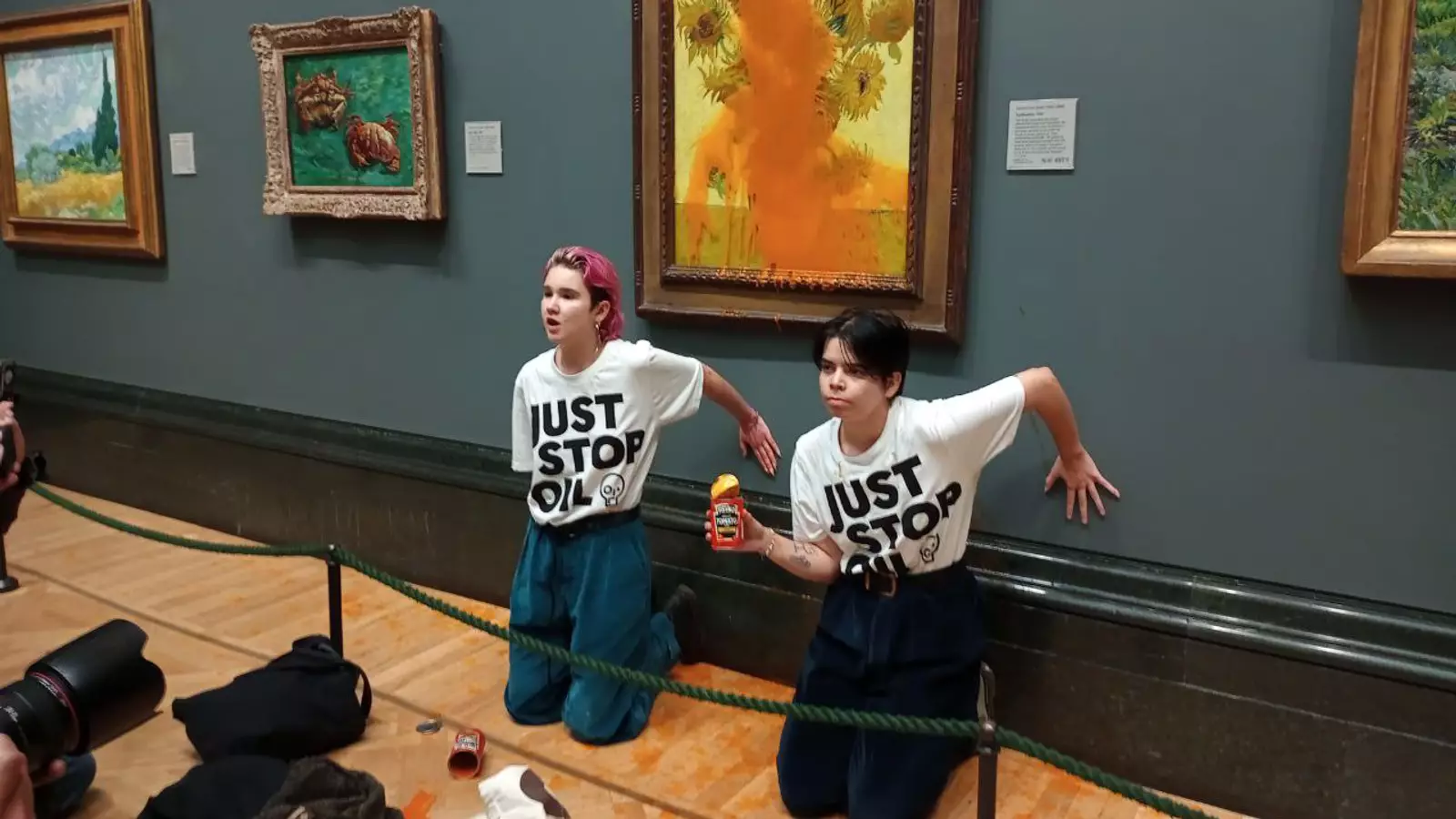In a significant move to enhance the safety of its collection and visitors, the National Gallery in London has introduced a ban on liquids, with the notable exceptions of baby formula, expressed milk, and prescribed medications. This unprecedented policy, which takes effect immediately, reflects a growing concern over the safety of priceless artworks in the wake of increased activism targeting iconic pieces. The gallery’s decision underscores the delicate balance between maintaining open access to cultural treasures and ensuring their protection in a time when protests have become more radical and frequent.
Over the past year and a half, a series of high-profile attacks on art have horrified both the public and the art community. Notable incidents include assaults on renowned works such as Vincent van Gogh’s *Sunflowers*, John Constable’s *The Hay Wain*, and Velázquez’s *Rokeby Venus*. The frequency of these incidents has compelled the museum to reevaluate their security protocols, leading to the implementation of measures designed not only to safeguard the artworks but also to foster a sense of security among visitors and staff. The gallery articulated this necessity in a statement, emphasizing that they have reached a critical juncture where protective action could no longer be postponed.
The recent wave of protests has not only resulted in physical damage to artworks, with estimates of damages running into tens of thousands of pounds, but has also caused significant emotional distress among museum-goers. Just weeks ago, activists from the group Just Stop Oil targeted two versions of Van Gogh’s *Sunflowers,* splattering them with soup. While the paintings themselves were fortunately unharmed, the frames suffered considerable damage, eliciting a robust response from both the museum and the legal system. In total, three activists are currently contesting criminal damage charges related to these incidents, showcasing the legal ramifications of their actions.
A Shift in Visitor Experience
The changes at the National Gallery extend beyond merely banning liquids; the museum also encourages a minimalist approach to personal items, advocating for smaller bags and reducing visitor load. These adjustments highlight an increased emphasis on security at the entry points, where walk-through metal detectors will be utilized and bags will undergo inspections. While these measures are undoubtedly necessary for the protection of the artworks, they are likely to alter the visitor experience, potentially leading to longer wait times and a more stringent entrance process.
As societal activism continues to evolve, cultural institutions are grappling with the implications for public access and the preservation of their collections. The National Gallery’s proactive measures signify a broader trend in the art world; museums are increasingly challenged to adapt to disruptive protests while maintaining their commitment to education and accessibility. While the motivations behind such protests may be well-intentioned, the collateral damage to our cultural heritage cannot be overlooked. The current dilemma faced by galleries epitomizes a pivotal moment in the interplay between activism, preservation, and the visitor experience, raising crucial questions about the future of art in a protesting society.


Leave a Reply